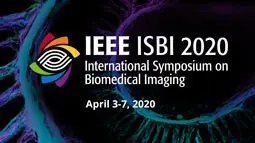A Semi-Supervised Joint Learning Approach to Left Ventricular Segmentation and Motion Tracking in Echocardiography
Kevin Ta, Shawn Ahn, Allen Lu, John Stendahl, Albert Sinusas, James Duncan
-
Members: FreeSPS
IEEE Members: $11.00
Non-members: $15.00Length: 14:50
03 Apr 2020
Accurate interpretation and analysis of echocardiography is important in assessing cardiovascular health. However, motion tracking often relies on accurate segmentation of the myocardium, which can be difficult to obtain due to inherent ultrasound properties. In order to address this limitation, we propose a semi-supervised joint learning network that exploits overlapping features in motion tracking and segmentation. The network simultaneously trains two branches: one for motion tracking and one for segmentation. Each branch learns to extract features relevant to their respective tasks and shares them with the other. Learned motion estimations propagate a manually segmented mask through time, which is used to guide future segmentation predictions. Physiological constraints are introduced to enforce realistic cardiac behavior. Experimental results on synthetic and in vivo canine 2D+t echocardiographic sequences outperform some competing methods in both tasks.



